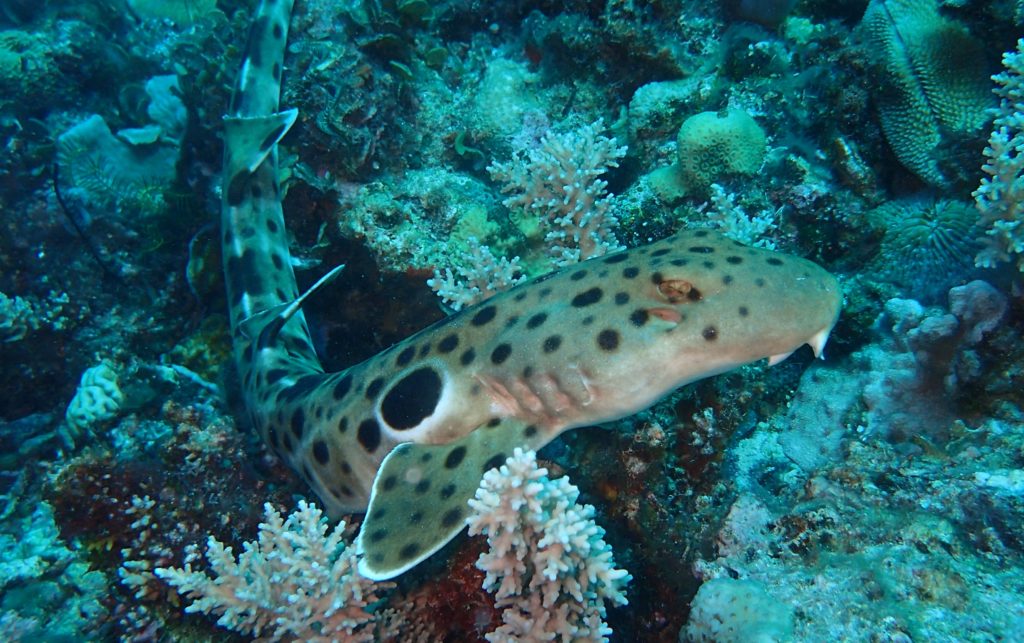“What great coral!” was the unexpected call after our first day diving off the Whitsundays. We were revisiting a site at Black Reef not surveyed since 2016, and the contrast with nearby dive sites visited early in the year was stark. Coral cover across the Whitsundays had declined catastrophically following repeated attacks from coral bleaching in 2016 and 2017, and cyclone Debbie in 2017, but now some coral, at least, was coming back.
With support from The Ian Potter Foundation, Eviota departed Airlie Beach on the 25th November in the first expedition of Reef Life Survey's rebooted ‘Lap of Australia’. The ultimate aim is to revisit >500 sites previously surveyed by RLS divers a decade ago around the full continent, and report findings in the 2021 Commonwealth State of the Environment Report.
On this voyage we were hopeful of making it to Mellish Reef, the furthermost coral outpost in the Coral Sea, 1000 km west of Cairns. But first we were to survey sites in the Whitsundays, while waiting for Captain Dusty Shields to arrive. Dusty's delay was caused by the late arrival of his first grandchild – Congratulations Grandad! In the interim, German Soler and Carolina Garcia stepped in as extra divers and crew, while Don ‘Captain Birdseye’ Love and Anna Edgar were aboard for the full trip.
Two pleasant days diving in the Whitsundays were followed by a rushed return to Airlie Beach to fix a mainsail tear (thanks Whitsunday Escape for quickly facilitating repairs) & to pick up Dusty. Then onward to the Swains, located at the southern offshore end of the Great Barrier Reef. Corals, sharks populations and other fishlife were generally healthy at the Swains, with no major bleaching events and few cyclones having occurred in recent years, though the area has suffered from devastating crown-of-thorn seastar outbreaks in places. Colourful nudibranchs were seen on every dive. My highlight was a red banded pipefish that I hadn’t seen before.

After four days in the Swains, conditions were perfect to make the jump to the Coral Sea; however, the wind wasn't from the direction needed to make it to Mellish Reef. Instead we settled on an overnight sail – spinnaker flying – to Fredrick Reef. Highlights from Fredrick include 40 m underwater visibility, a visit from the rare parrotfish Scarus festivus, and giant Queensland grouper. However, there were fewer seasnakes on our transects than previous visits to Fredrick Reef.
Next stop was Kenn Reef, near the outermost boundary of Australian territory. Diving was much the same as at Fredrick – terrific visibility, seasnakes, coral cover reduced by frequent cyclones, large fishes. Collecting data at Kenn Reef was particularly important as half of the reef has now been closed to fishing with the new Australian Marine Parks. Hopefully, the fishes will be even bigger next time we visit!
While sitting with sundowner refreshments on Eviota’s back deck in the late afternoon, an unexpected buzzing broke out. Not a coastwatch plane but a dragonfly arriving from the west after travelling at least 600 km from the mainland. She eventually moved off, heading east in search of a mate and freshwater to lay her eggs. Good luck to her; though her chances aren't great, with over 800km of open ocean till she hits New Caledonia.

Knowing that the wind would soon turn for our return home, we took the opportunity to firstly head 100 km further south, to Bird Islet. This is just below the main cyclone belt, so with great coral as well as seasnakes. No doubt about its name – the tussock-covered cay was alive with seabirds, including noddies, terns, frigates, boobies, and one lost chick.
After a day at Bird Islet, with four sites completed, we moved to nearby Porpoise Cay for another three sites. Matthew Flinders and others made a miraculous escape when their vessel, HMS Porpoise, was wrecked here in 1803, spending weeks stranded on the small cay before rowing in an open boat all the way to Sydney. Though there was no sign of wreckage in the lagoon while diving, we did find a huge snake-like holothurian under the transect line that was just as exciting.
However, all good things must come to an end, so we eventually stopped diving in late afternoon and headed Eviota back towards Airlie Beach. We were hoping to repeat surveys at our oldest Swains site when passing the next day, though we didn’t make it in time. We did, however, get to Middle Percy Island the subsequent day, and were greeted with the first email connection in two weeks.
A day later we were at Lindeman Island, then back to port after surveys at two Australian Institute for Marine Sciences inshore monitoring sites near Hamilton Island; a dive in barren, turbid, jellyfish-laden, current-swept water followed by data entry to finish the trip! What, no volunteers?!















